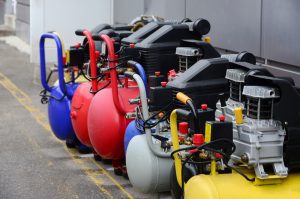
One question that seems to get asked all the time when it comes to using air tools is “how large of an air compressor do I need”?
Manufacturers make a large range of compressors, from small pancake compressors to large, stationary ones.
This handy chart shows what size compressor is needed for each tool. PROTIP: a 20-Gallon Compressor will handle most tasks.
At Tool Tally, I’m going to cover the specifications you need to know to determine air compressor size, and then provide a handy sizing chart to help you get your answer quickly.
See Related: Air Compressor For Framing Nailer
Most Popular Tool Sizes:
Air Compressor Size Chart By Tool (PSI/CFM)
Most tools will have a CFM and PSI requirement. You can check your tool for that exact amount. However, here are some of the well-known air compressor size requirements based on your tool type.
| Tool | Required PSI | CFM @ 90 PSI | Compressor Size: |
|---|---|---|---|
| Sand Blaster (#4 Nozzle) | 60-125 | 70 | Rotary Compressor |
| Disc Sander | 90-100 | 20 | 80-Gallon |
| Dual Action Sander | 90 | 15 | 80-Gallon |
| 1" Impact Driver | 90-100 | 12 | 60-Gallon |
| High Volume Paint Sprayer Gun | 40 | 12 | 60-Gallon |
| Orbital Sander | 70-100 | 10 | 30-Gallon |
| Low Volume Paint Sprayer Gun | 45 | 9 | 30-Gallon |
| 3/4" Impact Wrench | 90-100 | 7 | 30-Gallon |
| Angle Grinder | 90-100 | 6.5 | 30-Gallon |
| Die Grinder | 70-90 | 5 | 20-Gallon |
| Plasma Cutter | 90-100 | 4.5 | 20-Gallon |
| Chisel/Air Hammer | 90-100 | 4 | 20-Gallon |
| Drill | 70-90 | 4 | 20-Gallon |
| Riveter | 90-100 | 4 | 20-Gallon |
| 1/2" Impact Wrench | 90-100 | 4 | 20-Gallon |
| Speed Saw | 90-100 | 4 | 20-Gallon |
| Grease Gun | 120-150 | 3 | Portable Compressor |
| Staple Gun | 70-90 | 3 | Portable Compressor |
| 3/8" Impact Wrench | 90-100 | 3 | Portable Compressor |
| 1/4" Ratchet | 90-100 | 3 | Portable Compressor |
| 1/2" Ratchet | 90-100 | 3 | Portable Compressor |
| Blow Gun | 90-100 | 2.5 | 6-Gallon |
| Framing Nailer | 60-120 | 2.5 | 6-Gallon |
| Finish Nailer | 70-120 | 2 | 6-Gallon |
| Brad Nailer | 60-120 | 1 | 6-Gallon |
What Size Air Compressor Do You Need?
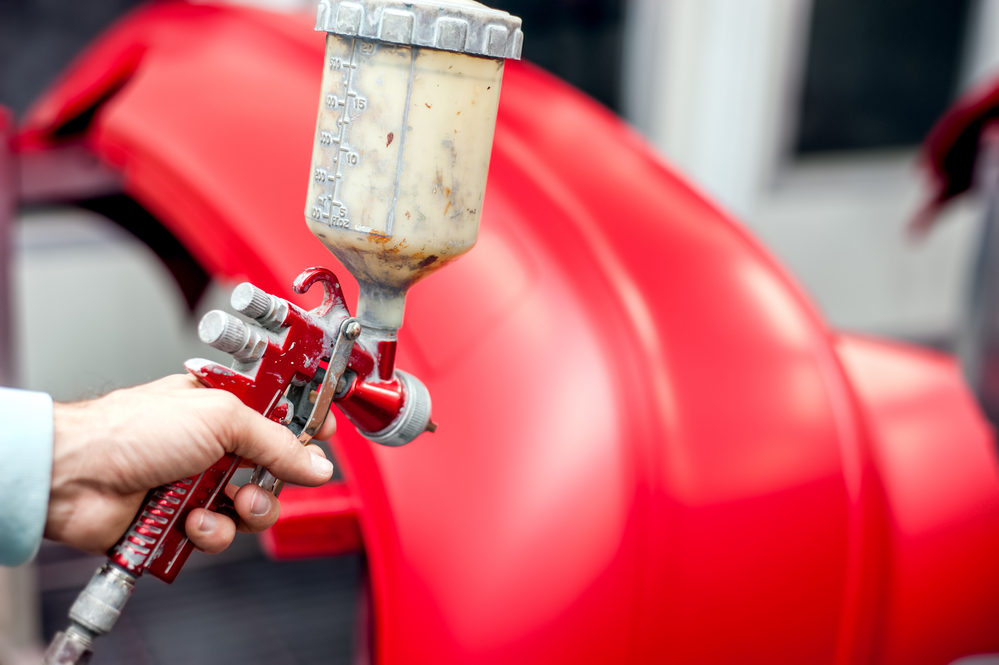
When discussing pneumatic tools you’ll inevitably hear the terms “CFM” (sometimes “SCFM”) and “PSI” mentioned.
CFM Requirements (and SCFM Vs CFM)
CFM (Cubic Feet per Minute) and SCFM (Standard Cubic Feet per Minute) are the terms used to measure airflow, or the rate at which a tool needs air delivered to it to operate properly.
The key difference between the two terms is that SCFM is calculated using standard factors for pressure and temperature (both factors affect air density). CFM is derived using actual conditions of the environment.
SCFM makes it easier to match cfm requirements by using the “apples to apples” approach. Most manufacturers will measure their cubic feet per minute flows in a standardized environment, so when you see a CFM rating on an air tool or compressor, assume it is SCFM.
PSI Requirements
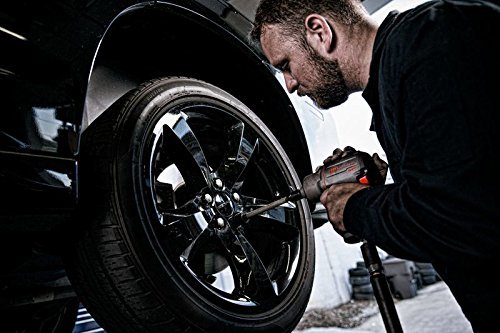
PSI refers to Pounds per Square Inch. It is the unit typically used to measure air pressure, or how much force a given air-flow (CFM) has.
Both CFM/SCFM and PSI are important to having your air tools work at peak capability, as they are rated to work the best under given ranges for each measurement.
Tank Size
Air compressors can be as little as 1 gallon for small airbrushing operations on up to over 80 gallons. Tank size is where compressed air is stored until you need it. This allows you to work a longer period of time without the compressor having to turn on.
Generally, as you move up in tank size, you also increase in compressor strength as well. The large the compressor, the greater the CFM and PSI that it can produce.
This is where you need to read the specifications. You can purchase a 6 gallon tank that only produces 2 CFM or one with a bigger compressor that creates 4 CFM.
See Related: We tried inflating a pool with an air compressor (life decisions I’ve regretted)
Air Compressor Size For Carbon Arc Gouging

I’ve been having more folks ask about what size compressor they should buy for air carbon arc gouging. In carbon arc gouging a carbon rod is used to heat and melt the metal, and a blast of air moves the molten metal out of the way. You need a compressor that can deliver 80 PSI with a 21 CFM airflow. Generally, this is going to be an 80 to 90-gallon air compressor as well as a 400 amp welder.
Air Compressor Size For Plasma Cutters
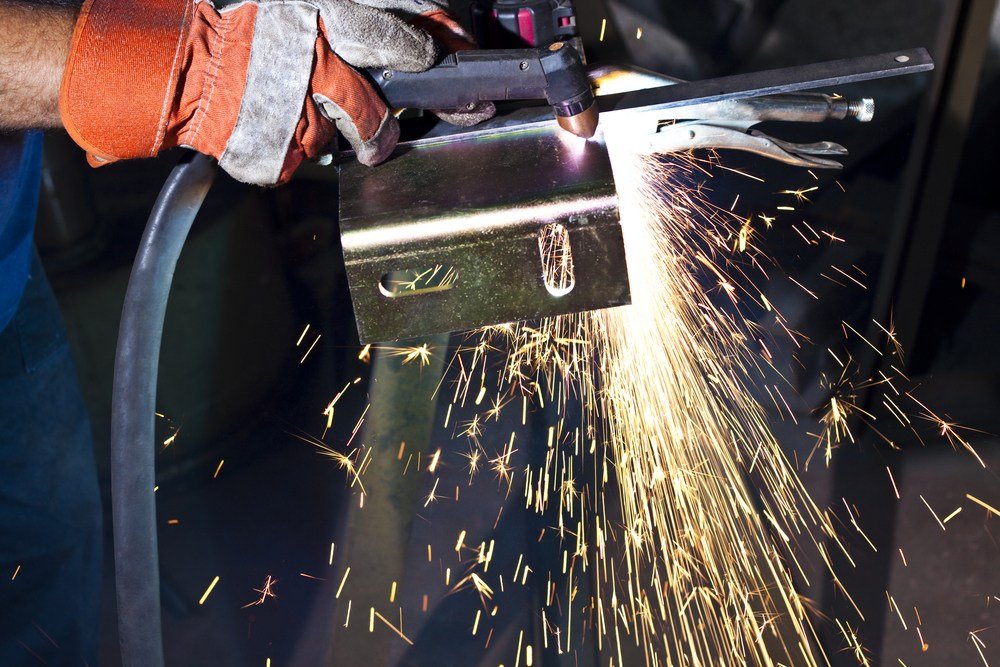
It’s been brought to my attention that I left Plasma cutters off of the list.
Most plasma cutters that you use around the shop will likely only need about 6 CFM @ 90 PSI. There are some bigger units that require 11 CFM. To be honest, using plasma can be finicky enough, and not having adequate air flow makes it that much harder. (I say finicky, but I did run my first plasma cutter at twelve years old, so it can’t be that finicky).
You may be able to get by with as little as 60 PSI with the smaller units. If that is the case , then a 30-gallon compressor should get you going. Frankly, though, I find most Plasma cutters to be airflow hungry, and my favorite was when I got to use one that was hooked up to a 60 Gallon air compressor like one of these.
Buying Guide
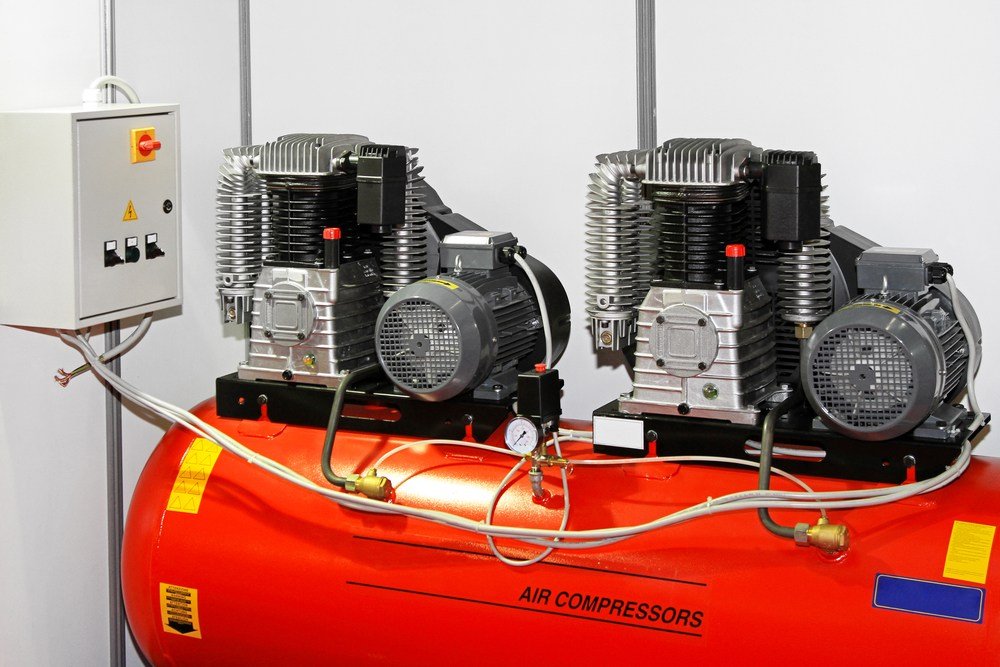
The CFM and PSI requirements for the air tools you plan to use are only one part of the equation.
Here are other main things that you need to think about when looking for the air compressor that will be the best choice for your needs
What Type Of Projects Will You Be Doing?
If you are just doing construction projects around the house, a portable pancake compressor that can produce 4 CFM can do everything you need.
Mechanics tend to need a larger compressor. Generally a 30-gallon compressor will produce the power needed to run an impact wrench.
Body shops and large cabinet shops generally run larger compressors that are 60 or 80 gallon in size. This allows multiple employees to operate multiple air tools without a drop in air supply.
Where Will Your Use It?
Are you looking to do some handyman work around the house, or are you setting up your own shop in your garage or pole barn?
Smaller jobs inside your home would benefit from a small portable unit, while the more demanding needs of a shop would need a larger compressor that can manage several types of tools and has the capacity for tasks that may require more torque and power from your tools.
Continuous Duty or Not?
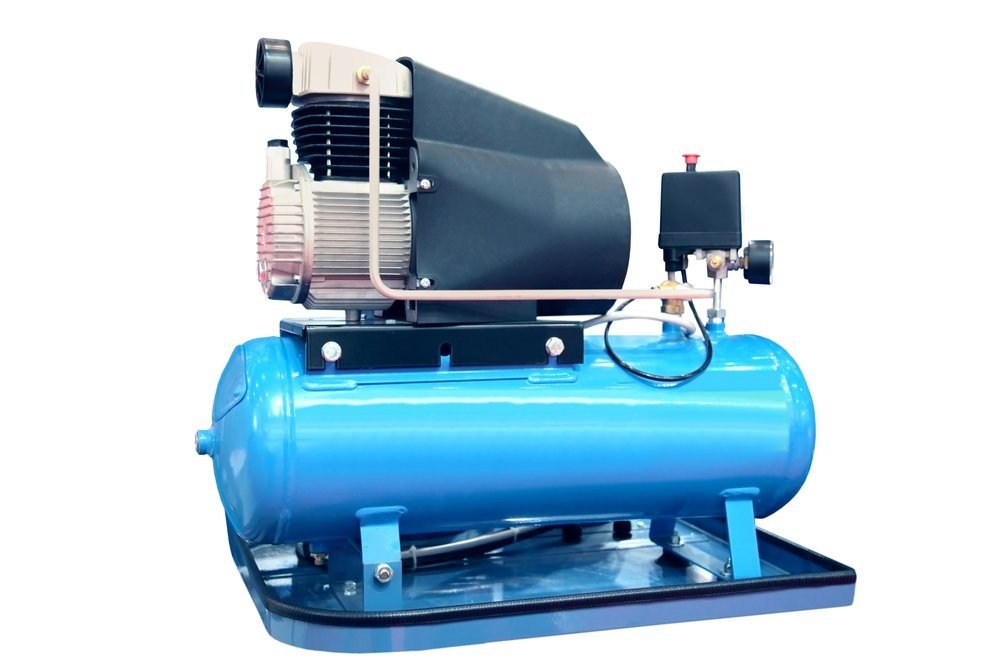
This simply means “will your tool be compressing 100% of the time”.
A good way to look at it is a nail gun vs. a sandblaster. The nail gun is used in short bursts where the compressor can have time to replenish the air supply. Using a sandblaster means a constant air supply is required while the tool is in use, therefore needing more air capacity for proper operation.
Most air compressors are oil-free. This means that they do not need oil added to them. These oil-free compressors are designed to take frequent breaks to cool down. Continuous duty compressor pumps require a little bit of oil to keep their pistons moving freely. They have the ability to run for long stretches without stopping.
What kind of power source do you have?
Depending on where you plan on using the compressor, the power source that you will have available in a particular environment is critical. Indoor applications are almost exclusively handled with electric compressors. Gas compressors are the perfect solution for outside work where there are no readily available electrical outlets.
Besides…running a gas engine in an enclosed area is an extremely dangerous thing to do! The engine will emit dangerous combustion fumes that can be deadly (such as carbon dioxide).
Noise requirements?
This is more a function of the overall design of the air compressor instead of relating to the size and capacity needed. Traditionally air compressors tend to be fairly loud. Newer designs take this into account in order to reduce the noise levels. This is much better for indoor uses where you may have to have conversations with others in the room.
Why Tank Size Matters?
Tank size is critical in order to keep the air supply at the right levels when you are operating a tool (or multiple tools, if you are in an environment where people are using more than one air tool at a time with a single compressed air source).
Essentially all of the air to power your tools comes from what is stored in the tank. If you are using a tool that has a large air capacity, then a smaller tank size will not give you enough reserve air at the right CFM and PSI to keep the tool functioning as it should.
Another way to look at it is to consider whether or not your tools will be continuous duty. That requires more airflow, therefore a bigger tank can store a larger volume of air (industrial compressors can have air tanks as big as 60 gallons or more). In contrast, using a small finish nailer to do some trim work in your basement would probably suffice with, for example, a small three-gallon tank.
Common tank style types (and Does it matter?)
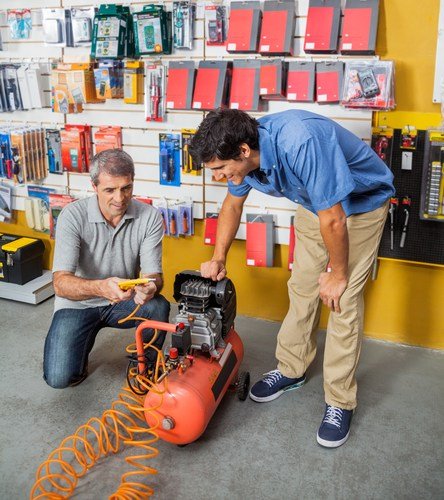
There are five general types of tanks that you may find:
Pancake – Pancake tanks are typically found on smaller (3 to 6 gallon) portable compressors. The compact design helps with portability in a smaller package.
Pontoon – This style is another common portable compressor design. It has a horizontal cylinder that looks similar to the pontoons on a pontoon boat. They are mounted horizontally and are also used in compressors with smaller capacities.
Twin Stack – Same as a pontoon tank, but there are two of them as the name implies. This style is used to increase capacity in a compact space on portable compressors.
Wheelbarrow – Some larger compressors have a larger pontoon style, but due to the weight of the tank and the other compressor components (such as the motor), they come with wheels and handles to help with moving them around the shop. You may find some twin-stack designs in a wheelbarrow configuration as well.
Vertical – Take a large pontoon-style tank and tip it on its end. This is the configuration that is used mostly for larger tanks that are meant to be permanently mounted in one place.
As far as compressor capability and is concerned the tank style really doesn’t mean much – air storage space is air storage space, no matter what it looks like. Accordingly, capacity isn’t a function of tanks style but is directly related to the tank size. The different compressor tank designs are in place for the purposes of potential portability, available floor space for installation, and the overall size of the compressor.
Do you need a gas or electric compressor?
There are two main types of power sources for air compressors: gas and electric. Gas units are similar to power generators in that they have a small combustion engine that drives the compressor motor. Electric units are designed to plug into a standard wall outlet or, for larger units, hard-wired for bigger units with larger voltage requirements (from 120VDC up to 480 VDC).
What is the difference between single and two-stage compressors?
During your search for the right air compressor, you may run across single and two-stage compressors. What is the difference, and which is best?
Single-stage compressors pump the air up to pressure directly into the holding tank. With a two-stage model, the air will get pumped twice before being stored. The main result of this difference is that a two-stage compressor will be able to provide larger CFM and PSI ratings as compared to a single-stage unit – and that can be critical in larger applications with multiple tools (such as an auto repair shop).
Why Air Tools Are Better Than Electric Tools
If you take a little time to look at the differences between using air tools vs. electric ones, you’ll find that there are several compelling reasons to go the air tool route.
The initial purchase price for an air tool is typically less than that for a comparable electric model. While true for the most part, that does have to be tempered with the fact that with pneumatic tools you need to also invest in an air compressor. That will make the total upfront costs more expensive, but it may balance out over time.
Air tools also have the capability to deliver more power. Electric tools (particularly cordless ones) present the possibility of running out of power due to the batteries draining as they are being used. You don’t want to be in the middle of a job and then not have enough juice to get the job done.
Electric tools may weigh more than air tools do. This may be a factor with- again – cordless electric tools as the weight of the battery needs to be factored in.
12v Compressor Buying Guide
When Do You a 12V Compressor With A Tank?
Since all air compressors are built to do the same job – merely fill something up – you’re probably wondering what the point of having a tank on the machine is.
These tanks are used to harness more air at a given time. This has a double effect – it boosts the amount of air you can get at any one time while also reducing the work of the motor.
That being said, an air tank isn’t necessarily for everyone – as they are bulky and have more power than is often needed or recommended for most basic inflation projects.
A tank is recommended for those that want to use their air compressor for power tools or to inflate larger items like mattresses or truck tires. The best 12v air compressors probably will not have a tank.
What Is The Highest CFM You Get In A 12-Volt Air Compressor?
Short for cubic feet per minute, CFM can have a wide range depending on the compressor in question. CFM differs from PSI in that PSI determines power, whereas CFM determines the volume of the air. A 12v air compressor can have an impressive amount of PSI, despite its small size, but struggles with CFM output. That being said, the maximum CFM these devices can run seems to top out no higher than 2.5 – making them primarily for fixing flats or inflating small items rather than used for air tools.
How To Determine The CFM For Your Air Compressor.
To determine the CFM of your compressor, you first need to divide the tank volume in gallons (V) by 7.48 to get the tank volume in cubic feet (CF). From here, release the air from the compressor and then refill it. Record how long it takes to refill (T), along with paying attention to the pounds per square inch (PSIG) – write down when the compressor starts (Y) and then when it cuts out (Z). Subtract the time the compressor kicked in from when it turned off. Whatever number you get from here (A) divide that by 14.7; this is the atmospheric pressure (ATM). Multiple the atmospheric pressure by the CF. This number (X) will then be multiplied by the total time it took to fill or T.
In mathematical notation, it works like this:
Tank Volume (V) / 7.48 = Cubic Feet (CF)
Record Refill Time (T)
Compressor Stop in PSIG (Z) – Compressor Start in PSIG (Y) = A
A / 14.7 = Atmospheric Pressure (ATM)
ATM * CF = X
X * T = Cubic Feet per Minute (CFM)
What Requirements Do I Need In An Air Compressor For Suspension?
While most vehicles rely on the suspension of metal springs or hydraulic shocks, others use a system of inflatable airbags. As expected, a compressor is needed to keep these bags filled. Without which the airbags can deflate and cause numerous problems with the car. If your vehicle is riding lower than usual, making weird noises when moving, or simply that the compressor never kicks on, you’ll probably need a new one.
It is recommended to have a compressor that has a dual path gauge – giving it the ability to add air pressure to both sides separately. This pressure should be maintained automatically, with built-in manual controls easily accessible if necessary. If you’re in the market, the Air Lift 72000 is a good option.
What Considerations Should I Pay Attention To When Buying An Air Compressor To Take Off-Roading?
It’s best to have something that is large enough to fill your tire yet is capable of being powered without a standard 110 outlet.
Most 12v air compressors have trouble creating enough power.
Look into models that hook directly to the car battery and contain some sort of tank. These variants are usually a little bit more expensive than their more residential cousins but are more reliable and have enough power to fill bigger tires.
I’d probably go with the Viair 40047 since it delivers pressure and volume that is hard to match.
How Long Do 12v Compressors Take To Air Up Car Tires?
It depends on the PSI and CFMs – many models out there are capable of topping off a car tire in under a minute. The majority can usually do it under three. Larger tires and other inflatables will take additional time past that.
Common Problems With 12 Volt Air Compressors
Nothing is perfect, and the affordability, small size, and ease of use of 12v air compressors do come with some problems.
- Lower CFMs: As mentioned previously, CFMs determine the speed and amount of air that the compressor is pushing out. This makes them not really viable when it comes to using air tools and filling up some inflatables.
- Overheating: While some 12v air compressors come with contingencies to get around, many don’t, especially the smaller ones. Having to work for longer periods of time to do the same as others, these types of compressors can overheat so much that you can’t even touch them.
- Longer Work Time: Even if the air compressor in question is built for your project, you should expect to spend some extra time filling what you need up.
- Tip Incompatibility: Industrially rated compressors usually have many attachments to work with, while 12v models usually rely on just a few.
Why These Compressors Aren’t Good For Airing Up An Air Mattress.
Not to sound like a broken record, but it all goes back to low CFMs. Needless to say, a mattress needs a lot of air, and one of these best 12v compressors often struggles to get it filled.
You’d be better off buying a blower that is designed to air up an air mattress by blowing a large volume of low-pressure air.
More advanced models can also do the job but expect to pay more for a premium machine.
12v models are rated to fill up things like car tires, bike tires, basketballs, and beach inflatables with a little problem, though.
Conclusion
Finding the right air compressor for your needs isn’t as mysterious or complicated as it may seem. All you really need to do is consider your usage plans in addition to the air requirement ratings for the tools that you plan to use.
Take all of those factors into account (plus all of the other points that we discussed) and getting the best air compressor should be a fairly simple thing to do.
 Skip to content
Skip to content

